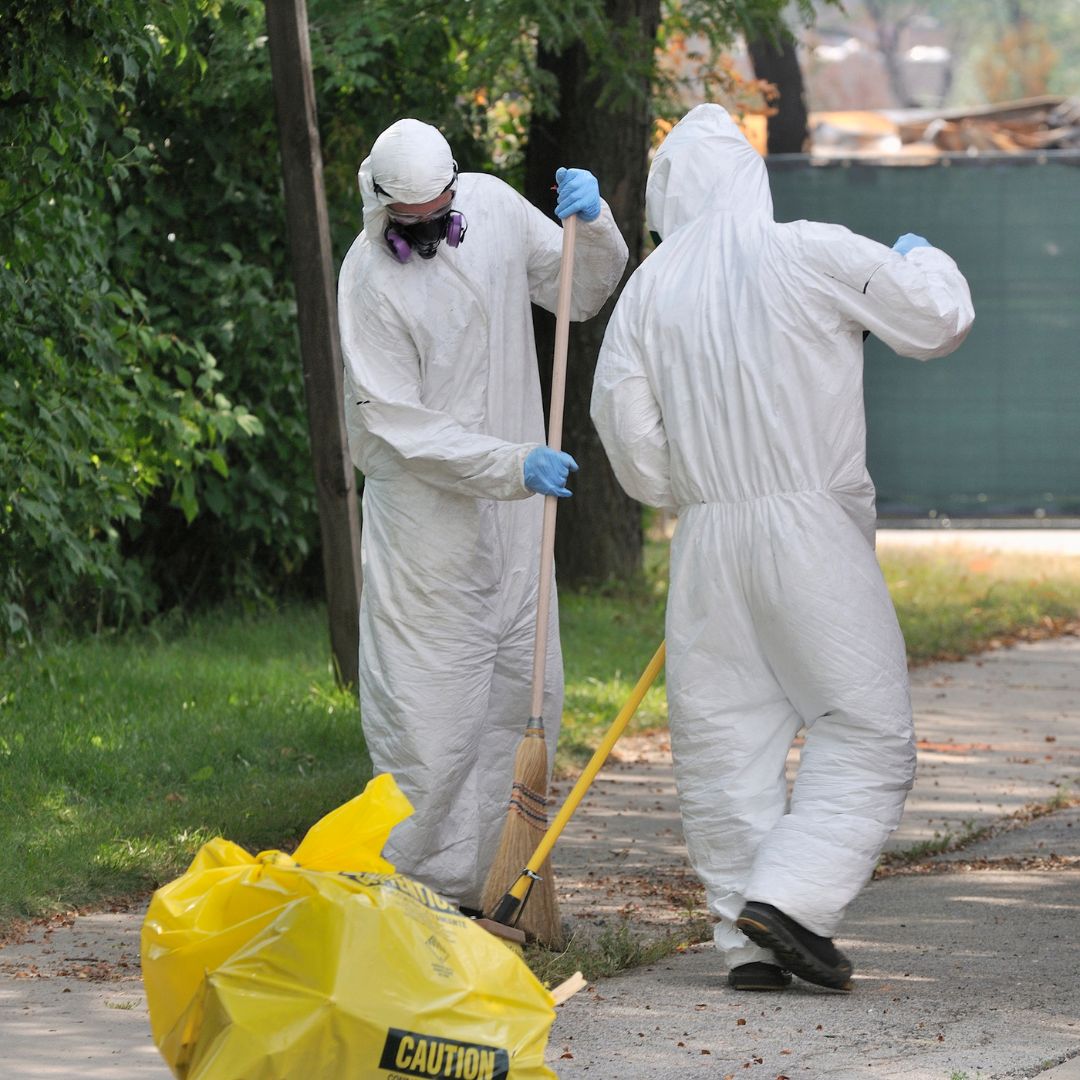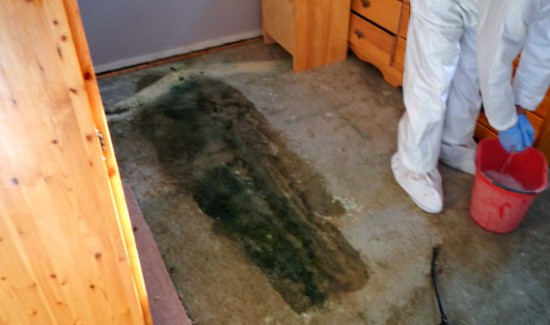Professional Biohazard Clean-up for Criminal Offense Scenes, Trauma Incidents, and Infected Areas
In the realm of professional biohazard cleaning, precise interest to detail and adherence to security methods are paramount. When confronted with the after-effects of a crime scene, injury case, or any infected room, the significance of proper cleaning can not be understated. The dangers and complexities connected with biohazards require specialized understanding and knowledge to ensure reliable removal. As we explore the complexities of biohazard clean-up for these delicate settings, a deeper understanding of the difficulties and critical procedures included will certainly emerge, shedding light on the essential duty of expert clean-up services in bring back safety and security and assurance.

Value of Biohazard Clean-up
Biohazard cleanup adhering to criminal activity scenes and trauma events is important for guaranteeing the safety and security of people and the setting. When these events take place, they frequently leave a selection of biohazards such as blood, bodily fluids, and other potentially contagious materials. These substances can harbor hazardous virus like infections and bacteria, presenting severe health dangers if not effectively cleaned up and sanitized.
Professional biohazard cleaning services are educated to manage these hazardous materials safely and properly. They have the required devices, such as individual protective equipment and specialized cleansing agents, to extensively decontaminate the affected areas. By entrusting the clean-up to trained professionals, people can prevent exposure to dangerous microorganisms and prevent the spread of infectious conditions.
In addition, appropriate biohazard clean-up is crucial for shielding the atmosphere. Incorrect disposal of biohazardous products can infect dirt, water sources, and air, posing a threat to wild animals and the ecological community. By following strict cleaning procedures, professionals can guarantee that biohazards are securely gotten rid of and taken care of according to guidelines, lessening the risk of environmental contamination.
Kinds of Biohazards Encountered
Different hazardous materials generally encountered in criminal offense scenes and trauma events present significant health and wellness risks otherwise managed correctly. Blood and bodily fluids are among the most usual biohazards found in these situations. These fluids can lug virus such as HIV, liver disease B and C, and various other dangerous microbes. Additionally, cells, organs, and body components can likewise present serious wellness risks due to potential contamination.
Another kind of biohazard frequently experienced is sharp things like needles, damaged glass, and other products that can cause injuries and transmit infections. Chemical dangers are additionally a problem, as crime scenes may have substances like tear gas, pepper spray, or medication manufacturing materials that need specific handling and disposal procedures to avoid further damage.
In addition, mold and mildew and microorganisms growth can occur precede where decomposition or long term exposure to moisture has happened. These microbes can release toxic substances and irritants into the air, posing breathing threats to those subjected. Generally, biohazard cleanup professionals must be well-equipped and trained to properly deal with these different sorts of harmful materials to guarantee the safety and security of themselves and others.
Devices and Safety Gear
When dealing with the crucial task of taking care of biohazards encountered in criminal activity scenes and trauma cases, the utilization of correct tools and safety equipment is extremely important to guaranteeing the safety of people associated with the clean-up process. Personal protective equipment (PPE) such as handwear covers, goggles, coveralls, and masks are necessary to stop straight call with potentially hazardous materials. Respirators are essential when taking care of biohazards that may come to be air-borne, shielding workers from inhaling dangerous fragments. Specialized cleansing tools like biohazard sharps, disinfectants, and bags containers are required for the secure collection and disposal of contaminated products. Additionally, durable equipment such as industrial-grade cleaning agents, foggers, and ozone generators may be required to thoroughly disinfect the afflicted area. Making sure that all equipment is effectively kept, routinely checked, and utilized according to security standards is vital in lessening the risk of direct exposure to biohazards throughout clean-up procedures.
Cleanup Refine and Strategies
Reliable and thorough clean-up of biohazardous products from criminal activity scenes and injury occurrences calls for careful attention to information and adherence to strict safety protocols. The clean-up procedure commonly entails numerous key steps.
Following the removal of biohazardous materials, the damaged area undergoes an extensive cleansing and sanitation procedure. This step includes using specialized cleaning up agents and equipment to make sure that all traces of contamination are removed. After cleansing, the location is subjected to extensive testing to validate that it is safe and cost-free of Clicking Here any type of remaining biohazards.

Decontamination and Disposal Procedures
To ensure detailed purification and appropriate disposal of biohazardous materials, adhering to the precise cleanup process, details treatments need to be meticulously followed with stringent adherence to safety procedures. Purification includes the removal or neutralization of pollutants to lessen the like it danger of exposure and spread of harmful substances. This process commonly consists of cleansing, sanitizing, and disinfecting the afflicted location using customized equipment and EPA-approved chemicals.
When decontamination is finished, proper disposal of biohazardous products is important to prevent additional contamination or injury. Biohazardous waste, such as blood-soaked materials or bodily liquids, have to be very carefully accumulated, packaged, and identified according to regulatory guidelines. ATP testing. These materials are then moved to accredited centers for disposal with appropriate networks, ensuring conformity with regional, state, and government guidelines

Verdict
Finally, professional biohazard cleanup is critical for making sure the reliable and safe elimination of dangerous materials from criminal offense scenes, injury occurrences, and contaminated spaces. By using specialized tools, protective equipment, and complying with correct cleaning procedures and techniques, biohazard cleaning groups can successfully get rid of and decontaminate of biohazards, minimizing the risk of direct exposure and injury to people and the atmosphere.
As we dive right into the intricacies of biohazard cleaning for these sensitive settings, a our website deeper understanding of the challenges and crucial procedures included will arise, losing light on the crucial role of specialist cleanup services in recovering safety and security and peace of mind.
Professional biohazard cleanup solutions are educated to handle these unsafe materials securely and efficiently. By adhering to stringent clean-up protocols, experts can ensure that biohazards are securely gotten rid of and disposed of in accordance with policies, minimizing the danger of ecological contamination.
In general, biohazard clean-up experts should be qualified and well-equipped to efficiently take care of these various types of unsafe products to ensure the security of themselves and others.
When attending to the critical job of handling biohazards experienced in crime scenes and trauma events, the use of appropriate equipment and protective equipment is extremely important to ensuring the safety of people included in the clean-up process.
Comments on “Flood Damage Restoration: Quick and Effective Healing for Your Home”